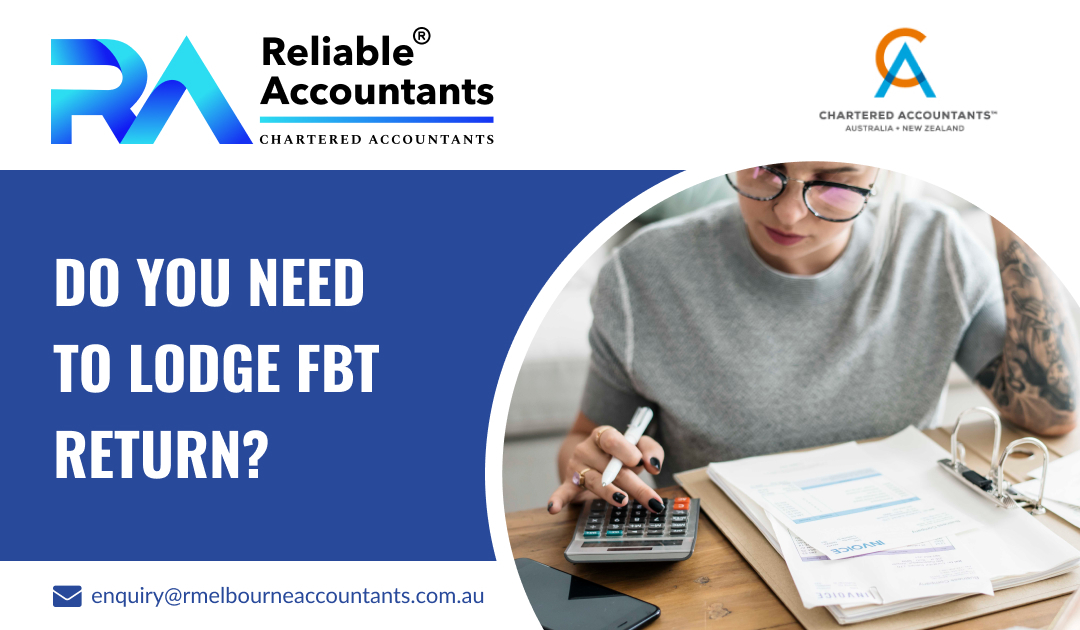It’s time to sort out your obligations and prepare for the latest FBT changes. With the 2025 year approaching on 31 March, it’s essential to stay on track to meet your tax obligations and be ready for the upcoming changes. Follow these steps to get it right:
- Check if you have an FBT liability for fringe benefits provided to your employees or their associates between 1 April 2024 and 31 March 2025.
- If you have an FBT liability, you must file an FBT return and pay the amount due by 21 May 2025.
- Report the reportable fringe benefits amount for each employee in their end-of-year payment details.
Do you need to file an FBT return?
You are required to file a fringe benefits tax (FBT) return for the FBT year (1 April to 31 March) if, during that period, you:
- Have FBT payable on the fringe benefits provided to your employees
- Paid FBT instalments through your activity statements
If you have paid FBT instalments and are entitled to a refund, it will be issued once you file your return. If you have your small business accountant in Melbourne, then you can get help from them to look after your tax and super obligations.
What’s new in FBT?
Starting from this FBT year, there are a few key updates to be aware of:
- You can use existing records in place of travel diaries and declarations for certain fringe benefits. However, if you’re relying on corporate records, they must contain the minimum required information at the time you submit your FBT return. Proper record-keeping ensures accurate calculation of the taxable value of benefits and supports your FBT position.
- The FBT exemption for plug-in hybrid electric vehicles (PHEVs) will end on 31 March. Employers can still apply for the exemption if:
- The PHEV was used, or available for use, before 1 April 2025 (and the use was exempt), and
- There is a financially binding commitment to continue providing private use of the vehicle from 1 April 2025 onwards.
You may have to keep certain FBT records for at least 5 years, and for FBT record-keeping, you can reach out to a bookkeeper in Melbourne.
Paying FBT instalments through activity statements
If you are required to pay an FBT of $3,000 or more for the year, then next year, you have to pay quarterly FBT instalments. The ATO will send you an activity statement quarterly. Your activity statement will show:
- the due date for filing and paying your activity statement
- the amount of your FBT instalment.
When submitting your annual FBT return, you can deduct the instalments you’ve paid throughout the year from your actual FBT liability. If your instalments are:
- less than your liability, you will pay the shortfall
- over your liability, the ATO will refund the excess.
You need to file all your activity statements for the FBT year, which will end on 31 March, including the March quarter, before filing your FBT return. There will be no processing for your FBT return until all your activity statements are lodged.
When is the due date to file and pay your return?
You must file and pay your FBT by 21 May, unless:
- Your tax return accountant files your return electronically – in this case, the due date is usually 25 June.
- The ATO accepts your request for an extension of time.
In case the due date is on public holiday or weekend, the due date is the next business day. If you are filing your FBT return using a tax agent for the first time, consider contacting them before 21 May. The tax agent must add you to their FBT client list by this mentioned date so you can file and pay your return for June. You pay fringe benefits tax in either:
- one annual payment
- instalments every quarter with your activity statements and an annual payment of any amount still owing.
Conclusion
You need to find out certain conditions to know whether you need to lodge FBT. To file and pay the FBT amount, you can seek help from Reliable Melbourne Accountants.

